A case riddled with shady contradictions. A search headed by Cristina Castro, a mother with a heart of steel, ready for anything which might lead her to discover the truth behind the disappearance of her son. With the suspicion – in reality a conviction – that Facundo Astudillo Castro’s death was authored by members of the Buenos Aires provincial police.
The case began on April 30 when Facundo, 22, left his home in the township of Pedro Luro, heading for Bahía Blanca to meet up with his ex-girlfriend. The two had recently quarrelled, according to the family.
It was to be a long journey, especially within the context of restrictions put in place during pandemic. According to the to and fro of the testimony committed by the police officers, they detained him for not having the corresponding permit. Later, there would be a confused, brief and terrible moment of communication with his mother, which sounded like a farewell. And then, silence.
On Wednesday, It was officially confirmed that human remains found in a channel in Villarino Viejo, near Bahía Blanca, belong to "Kufa", as he was known to his friends.
Castro, who left home for love, never returned home.
April 30
5.30am (approximately). Facundo leaves his home in the locality of Pedro Luro, heading for Bahía Blanca. His aim is to hitchhike the 121 kilometres separating the two places along Route 3 to reach the home of his former girlfriend, with whom he had lived until they separated last February. After that, he had eturned home to live with his mother, Cristina Castro, and his younger brother. Facundo would never reach his destination.
10am (approximately). Police officers from Mayor Buratovich (a locality in the Villarino district, 30 kilometres distant from Pedro Luro) stop Facundo on the road for quarantine violation. This is to be the last time Facundo was seen alive. A little later he is also intercepted at the access to Teniente Origone, according to the police.
10.30am (approximately). According to Cristina Castro’s direct testimony: "A policewoman of the city of Mayor Buratovich rang to tell me that they had booked Facundo for quarantine violation. She rang me to check the address and nothing more. They did not tell me anything about an arrest so I didn’t worry too much. I did not know he had left home.” As from that point for the next two hours, Cristina insistently calls Facundo’s mobile telephone in an attempt to establish contact.
After 1pm. Cristina receives a communication from her son, who tells her: "Mum, you have no idea where I am. Mummy, you’ll never see me again.” Hours later, witnesses affirm that police officers made Facundo climb aboard a Toyota Hilux van.
8.21pm. Juan, Facundo’s brewery workmate, receives an SMS message from his friend: "Juan, my battery’s dead, I’ll call you in a while." The friend testifies in the case that the message seemed strange to him because Facundo never used SMS messages. "I’d say it was not written by him, he would have used different words," said Juan. For the family the activation of his mobile telephone captured by antennae near Bahía Blanca with this dubious message is the first phase of the cover-up.
June 5
Facundo’s mother, working with the lawyers Luciano Peretto and Leandro Aparicio, denounces the disappearance of her son at the police station of Pedro Luro. The complaint passes to Bahía Blanca prosecutor Rodolfo de Lucía, who opens an investigation to “ascertain his whereabouts.” Until then the working hypothesis was that the youth had not gone home of his own free will.
June 15
The first date for a dragnet in Mayor Buratovich is suspended. Policeman Alberto González says he saw Facundo on Route 3, 750 kilometres south of Buenos Aires. According to his testimony, he stopped the youth and photographed his driving licence to verify his identity. The constable assures that Facundo had continued on his way but at one point he said that the lad had carried on walking and at another that he had climbed aboard a car. The contradictions begin.
June 19
The first dragnet between Pedro Luro and Intendente Origone with the search concentrating on Mayor Buratovich. That same day Cristina Castro and her lawyers serve notice that Policewoman Xiomara Flores testified that she took Facundo from Mayor Buratovich to Teniente Origone. Over 50 days after his disappearance, the courts notify the family of police statements placing Facundo beyond Mayor Buratovich.
June 27
Cristina Castro’s lawyers contact three citizens of Mayor Buratovich who maintain having seen the police arrest Facundo at a Route 3 checkpoint, just outside the town entrance and afterwards place him aboard a police patrol car.
July 8
A dragnet with over 200 police in Bahía Blanca to trace the whereabouts of Facundo Astudillo Castro takes place. Buenos Aires Province Security Minister Sergio Berni decides that provincial police chief Daniel García himself should supervise the search for Facundo in person.
After repeated requests by the family to take the Buenos Aires provincial police off the investigation, provincial prosecutor Rodolfo De Lucía in charge of the case removes them via a presentation by the Buenos Aires Province Human Rights Undersecretariat. Nevertheless, the prosecutor declares: "Over and above not finding objective elements which permit us to think of illegal police action or that this might be the reason determining why we cannot find Facundo, the investigation should continue preventively with the aid of forces depending on the national Security Ministry." The Federal Police, the Coast Guard (Prefectura Naval), the Border Guard (Gendarmería) and the Airport Police take charge of the situation.
The federal forces confiscate a police van, documents and the mobile telephones of four police officers based at the Mayor Buratovich precinct.
July 12
The court confiscates another police van belonging to the Teniente Origone precinct.
July 13
The United Nations Committee on Enforced Disappearances requests urgent measures from the Argentine government to find Facundo Astudillo Castro. The provincial Security Ministry removes Deputy Inspector Pablo Reguillón from the Mayor Buratovich precinct after the plaintiff’s lawyers denounce police threats. From that day onwards the precincts of Buratovich, Teniente Origone and Ascasubi are all placed under trusteeships and dragnets begin along Route 3 throughout the district of Villarino.
July 14
The Bahía Blanca prosecutor’s office announces it has “no objections to dogs trained by Mr Marcos Darío Herrero taking part in the search.” The dog-trainer’s intervention in the dragnets had been repeatedly requested by the plaintiffs. Herrero and his dogs had participated in various successful dragnets such as those finding the bodies of Bariloche policeman Lucas Muñoz, Micaela Ortega and Santiago Maldonado.
July 16
A witness keeping his identity in reserve, a farmer aged 72, testifies that he drove Castro towards Bahía Blanca in late April without fixing the date at around 4pm (reportedly at 3.40pm) for 25 kilometres from Teniente Origone in the direction of Cerri. He adds that he had taken a youth with the characteristics of Facundo without affirming in any way that it was him. Witness "H" testifies first to the federal prosecutor handling the case, Santiago Ulpiano Martínez, and then to the prosecutor’s office for police brutality (Procuraduría de Violencia Institucional or PROCUVIN). As he detailed, the youth said he was heading for Bahía Blanca and that he did not want to go home, thus asking to be left by an abandoned railway line in order to dodge the quarantine checkpoint.
The family does not believe this testimony, maintaining that it was installed to let the Buenos Aires provincial police off the hook. Cristina Castro’s lawyers say that witness "H" was planted to show that the police let Facundo go.
July 17
Two police cars and the private car of policewoman Siomara Ayelén Flores are examined forensically to detect possible bloodstains.
July 21
Cristina Castro challenges for the second time the impartiality of Bahía Blanca surrogate prosecutor Santiago Ulpiano Martínez, denouncing serious irregularities in the judicial investigation. Her request is presented by plaintiff lawyer Leandro Aparicio to the Bahía Blanca federal judge.
Martínez has been a prosecutor in Bahía Blanca since 1981. Ex-president Mauricio Macri appointed him federal prosecutor and the appointment was approved by the Senate but before that appointment he was surrogate prosecutor in two courtrooms, where he granted the benefit of house arrests while rejecting the detentions, trials and extraditions of military and civilian accomplices of state terrorism, judged and investigated in the southern Buenos Aires Province city.
July 24
Marcos Herrero and his tracker dog Yatel join the investigation, participating in the search of the Mayor Buratovich precinct and the forensic examination of the two police cars; in one of them, belonging to the Teniente Origone precinct, the dog sniffs Facundo Castro. The police deny that the youth had been there or in any of their cars.
August 3
Yatel, one of Marcos Herrero’s dogs, finds a personal object of Facundo in a plastic bag in the cells of the Teniente Origone police precinct. This discovery negates the police statements as to the youth never having been taken to that precinct. The egg-shaped wooden object, a present from Facundo’s grandmother recognised by Cristina Castro on the spot, contains inside a cow dedicated to Saint Anthony.
August 5
A psychic named Verónica Contreras speaks with Facundo’s mother from Mendoza to suggest sweeping a spot five kilometres distant from Mayor Buratovich. The court orders an urgent operation in the zone of irrigation and drainage canals pinpointed by the mentalist. A half-buried satchel, clothing and bones are found there.
August 7
Dragnets are repeated in the zone of the irrigation canals but without positive results. The Applied Technology Division of the Federal Police are finally able to gain access to the WhatsApp messages of Facundo’s mobile telephone after asking the telephone company to emit a new SIM card with his number.
August 14
The technological forensic examination detects two images of Facundo’s DNI identity card, which had been deleted from the mobile telephone of policewoman Jana Curuhinca, one of those arresting Facundo at the police checkpoint for lacking the corresponding permit. Her statement was one of the first in the file when it was still in the hands of the provincial court as a verification of whereabouts. Specialists of the Federal Police Division of Applied Technology are in charge of the procedure, which serves to disprove the claims that Facundo had only shown his driving licence.
August 15
The finding of a human skeleton in the lagoon zone of Villarino Viejo by fishermen is made public. Cristina Castro approaches the dragnet zone. She is unable to recognise the remains but manages to identify a sneaker found 30 metres from the body as belonging to her son.
August 24
President Alberto Fernández receives Cristina Castro at the Olivos presidential residence, their first face-to-face meeting following two previous telephone calls. The two plaintiff lawyers meet with national Security Minister Sabina Frederic.
August 27
Facundo’s mother meets for two hours with Buenos Aires Province Governor Axel Kicillof. She expresses satisfaction with his transparency but also explains that she expected more answers and repeats her criticisms of provincial Security Minister Sergio Berni, who she describes as a “loudmouth.”
August 28
Two days after meeting Facundo’s mother, Attorney-General Eduardo Casal appoints Procuvin head Andrés Heim and Horacio Azzolin, chief of the Ufeci (Unidad Especializada en Ciberdelincuencia) cybercrimes unit to "to intervene jointly or alternating" with the prosecutor Ulpiano Martínez.
September 2
The remains of the body found on August 15 are confirmed as belonging to Facundo.










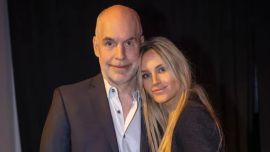

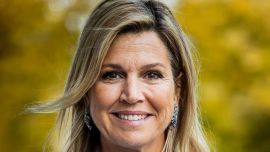




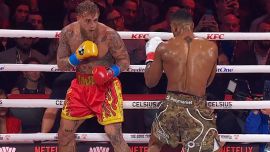
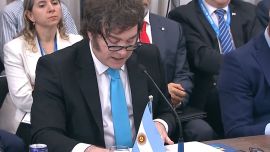
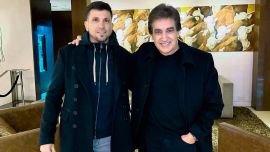
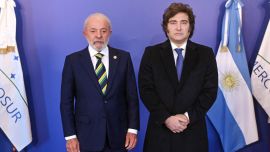
Comments